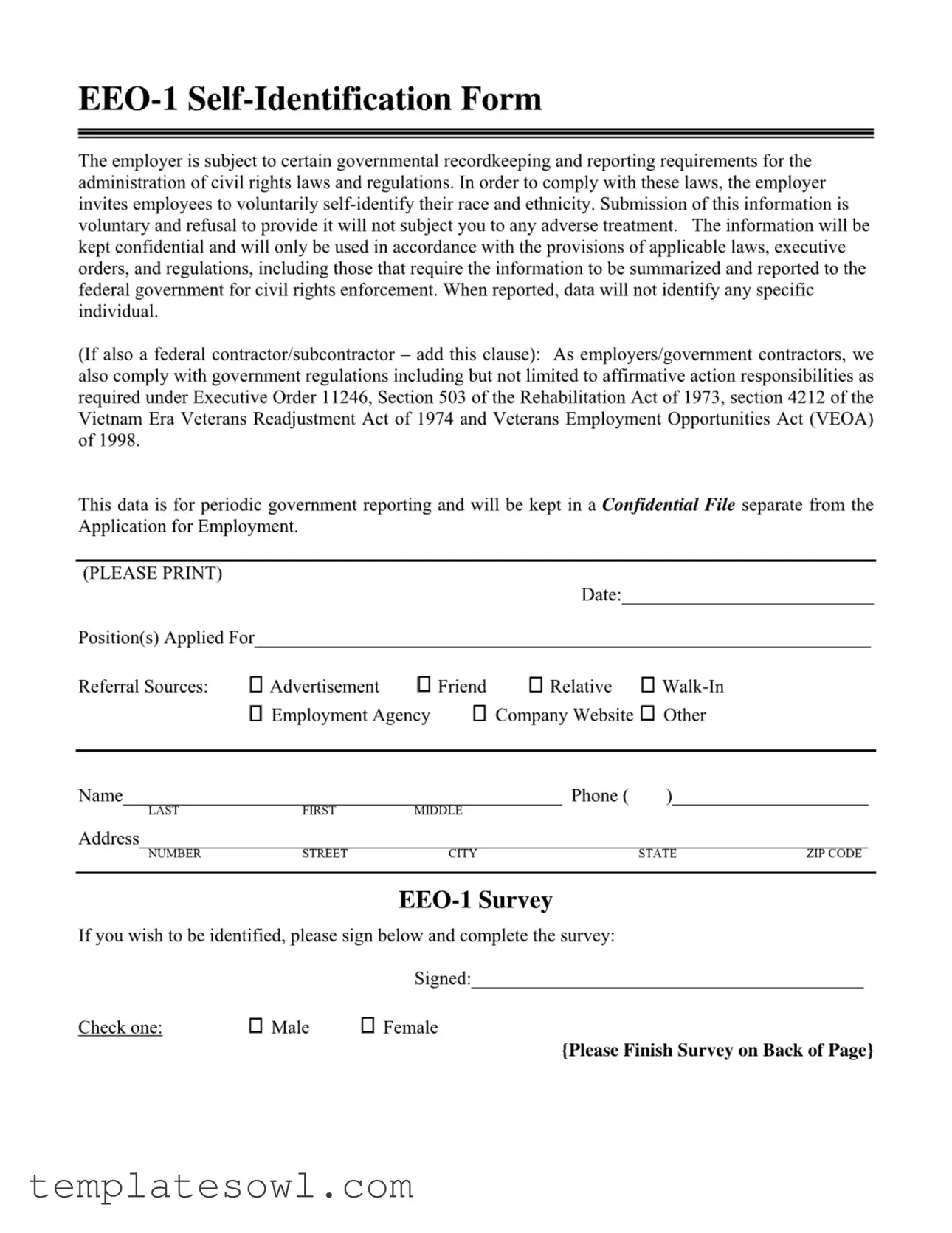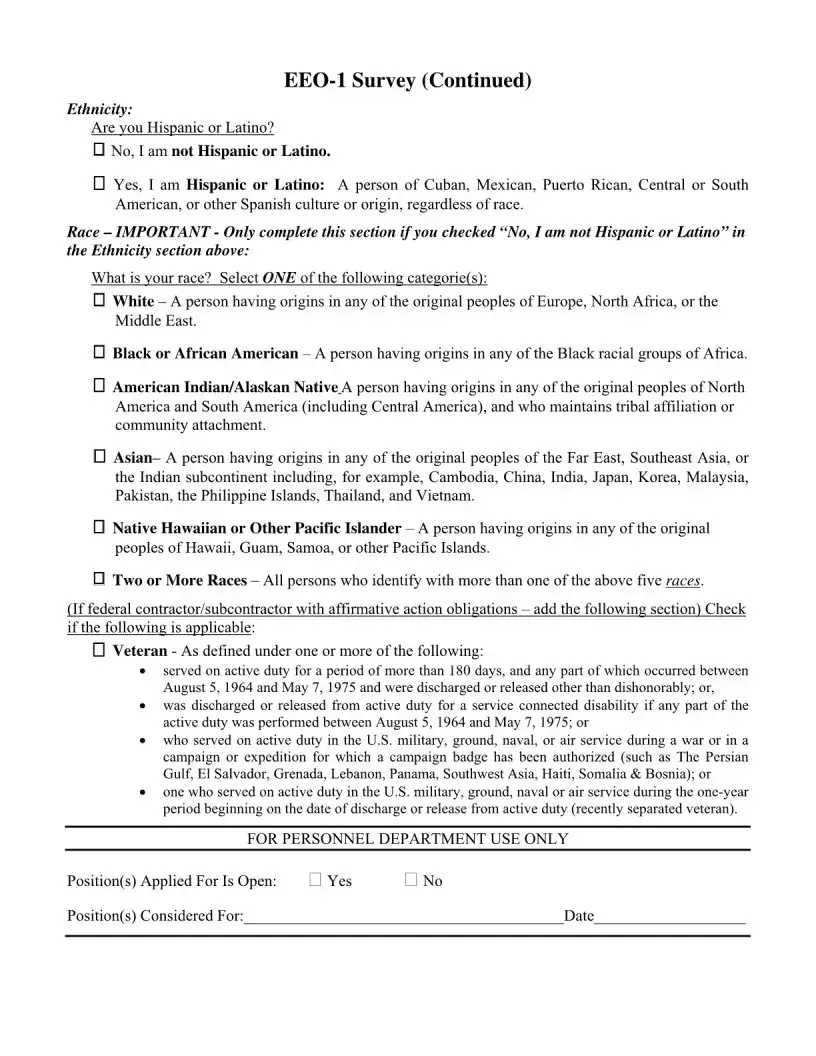What is the EEO-1 Form?
The EEO-1 Form is a compliance tool used by employers to gather demographic data about their employees. It supports the enforcement of federal civil rights laws by allowing the government to collect information on race, ethnicity, and gender in the workplace. Employers, especially federal contractors, must submit this information regularly to ensure adherence to applicable laws and regulations.
Is completion of the EEO-1 Form mandatory?
No, completing the EEO-1 Form is voluntary. Employees are invited to self-identify their race and ethnicity, but refusal to provide this information will not lead to any adverse treatment or consequences in the workplace. The intention behind this voluntary submission is to help employers meet their reporting obligations while respecting individual privacy.
How will my information be used?
The data collected from the EEO-1 Form is kept confidential and is used solely for reporting purposes in compliance with government regulations. Individual responses are not disclosed, and the information is summarized so that it cannot identify specific employees. This confidentiality ensures that all personal data is treated with the utmost respect.
What demographic categories are included in the EEO-1 Form?
The EEO-1 Form requires employees to identify their ethnicity and race. Employees may indicate if they are Hispanic or Latino and can select from various races, including White, Black or African American, American Indian/Alaskan Native, Asian, Native Hawaiian or Other Pacific Islander, and Two or More Races. This structured categorization helps the government monitor diversity and equity in the workplace.
What if I am a veteran? Does that affect my EEO-1 Form submission?
If you are a veteran, you may indicate that status on the EEO-1 Form. The form includes specific categories for veterans and outlines criteria to qualify under federal regulations. This inclusion allows employers to fulfill additional reporting obligations related to affirmative action for veterans, as required by federal law.
How often is the EEO-1 Form submitted?
The EEO-1 Form is typically submitted annually. Employers are required to collect and report data on a calendar year basis while ensuring the accuracy and completeness of the information provided. The exact submission deadlines depend on information from the Equal Employment Opportunity Commission (EEOC) and may vary from year to year.
What happens if an employer fails to submit the EEO-1 Form?
If an employer fails to submit the EEO-1 Form as required, they may face penalties, including fines or other enforcement actions by the EEOC. Additionally, non-compliance can affect the employer's eligibility for federal contracts and grants. Therefore, timely and accurate submission is critical for compliance.
Where can I find more information about the EEO-1 Form?
Additional information about the EEO-1 Form can be found on the Equal Employment Opportunity Commission's official website. The site provides resources, guidelines, and updates regarding the form, submission requirements, and compliance assistance for employers.


